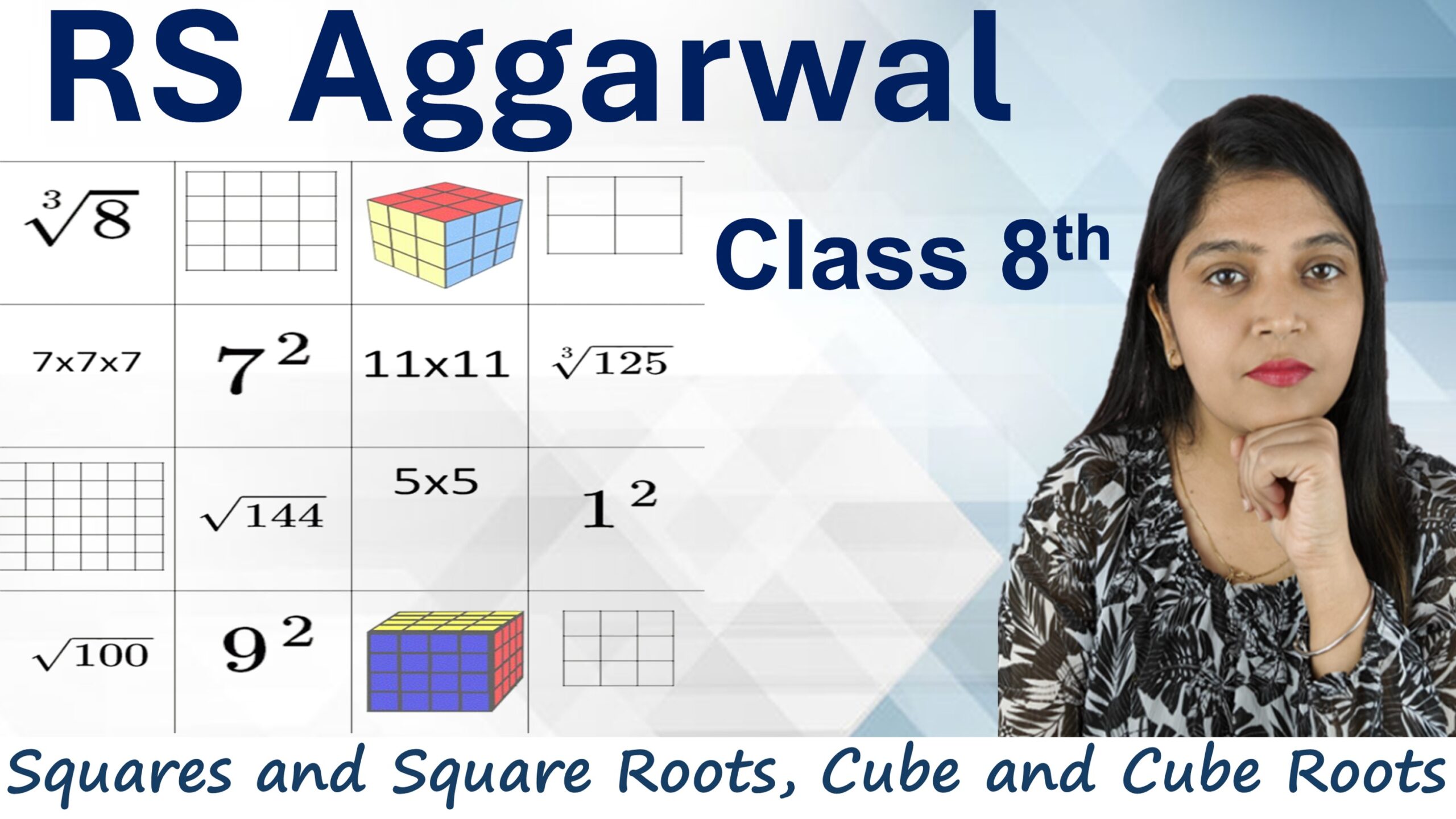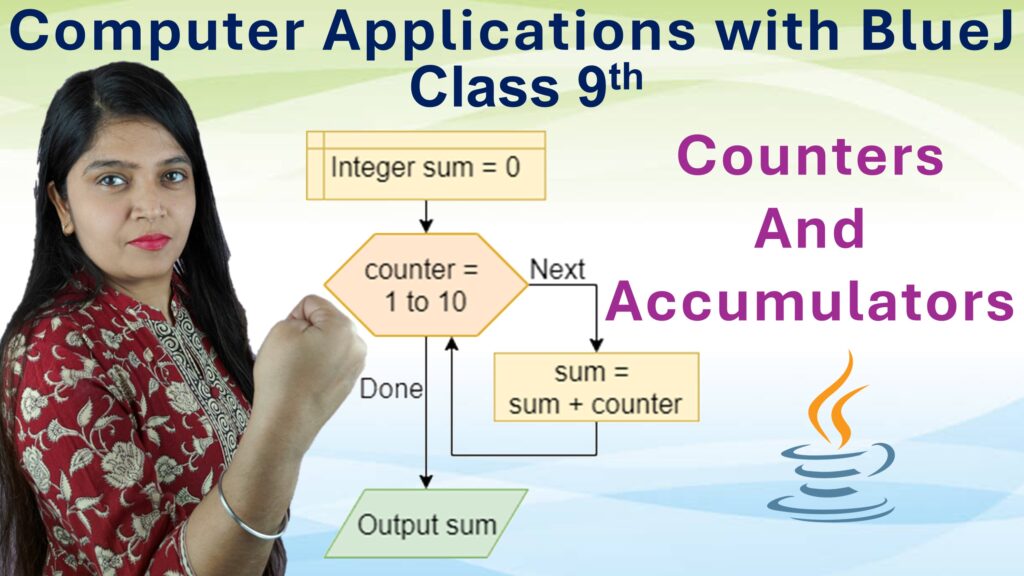Exercise: 3-B
Q1: Give reason to show that none of the numbers given below is a perfect square:
i. 2162
Step 1: Prime factorization of 2162
2162 = 2 × 1081 (1081 is not divisible by any small primes)
→ 1081 is a prime number.
Step 2: Since 1081 is unpaired, 2162 is not a perfect square.
Answer: 2162 is not a perfect square because it has an unpaired prime factor 1081.
ii. 6843
Step 1: Prime factorization of 6843
6843 = 3 × 2281 (2281 is not divisible by small primes)
→ 2281 is a prime number.
Step 2: Since 2281 is unpaired, 6843 is not a perfect square.
Answer: 6843 is not a perfect square because it has an unpaired prime factor 2281.
iii. 9637
Step 1: Prime factorization of 9637
9637 = 7 × 1373 (1373 is not divisible by small primes)
→ 1373 is a prime number.
Step 2: Since 1373 is unpaired, 9637 is not a perfect square.
Answer: 9637 is not a perfect square because it has an unpaired prime factor 1373.
iv. 6598
Step 1: Prime factorization of 6598
6598 = 2 × 3299 (3299 is not divisible by small primes)
→ 3299 is a prime number.
Step 2: Since 3299 is unpaired, 6598 is not a perfect square.
Answer: 6598 is not a perfect square because it has an unpaired prime factor 3299.
v. 640
Step 1: Prime factorization of 640
640 = 2⁷ × 5
Step 2: Since 5 is unpaired, 640 is not a perfect square.
Answer: 640 is not a perfect square because it has an unpaired prime factor 5.
vi. 49000
Step 1: Prime factorization of 49000
49000 = 2³ × 5³ × 7²
Step 2: Since both 2³ and 5³ are unpaired, 49000 is not a perfect square.
Answer: 49000 is not a perfect square because it has unpaired prime factors 2 and 5.
vii. 3600000
Step 1: Prime factorization of 3600000
\(3600000 = 2^2 × 3^2 × 10^5\)
Step 2: All prime factors are in pairs except 10. The power of 10 is odd so, 3600000 is not a perfect square.
Answer: 3600000 is a not perfect square.
Q2: Which of the following are squares of even numbers?
i. 676
Step 1: Find the square root of 676
√676 = 26 (which is an even number)
Answer: 676 is a square of an even number (26).
ii. 729
Step 1: Find the square root of 729
√729 = 27 (which is an odd number)
Answer: 729 is not a square of an even number.
iii. 1089
Step 1: Find the square root of 1089
√1089 = 33 (which is an odd number)
Answer: 1089 is not a square of an even number.
iv. 2304
Step 1: Find the square root of 2304
√2304 = 48 (which is an even number)
Answer: 2304 is a square of an even number (48).
v. 5625
Step 1: Find the square root of 5625
√5625 = 75 (which is an odd number)
Answer: 5625 is not a square of an even number.
vi. 9216
Step 1: Find the square root of 9216
√9216 = 96 (which is an even number)
Answer: 9216 is a square of an even number (96).
Q3: Which of the following are squares of odd numbers?
i. 484
Step 1: Find the square root of 484
√484 = 22 (which is an even number)
Answer: 484 is not a square of an odd number.
ii. 961
Step 1: Find the square root of 961
√961 = 31 (which is an odd number)
Answer: 961 is a square of an odd number (31).
iii. 4225
Step 1: Find the square root of 4225
√4225 = 65 (which is an odd number)
Answer: 4225 is a square of an odd number (65).
iv. 7396
Step 1: Find the square root of 7396
√7396 = 86 (which is an even number)
Answer: 7396 is not a square of an odd number.
v. 6241
Step 1: Find the square root of 6241
√6241 = 79 (which is an odd number)
Answer: 6241 is a square of an odd number (79).
vi. 8649
Step 1: Find the square root of 8649
√8649 = 93 (which is an odd number)
Answer: 8649 is a square of an odd number (93).
Q4: Without adding find the sum:
i. 1+3+5+7+9+11+13+15+17+19+21
Step 1: Use the formula for sum of first n odd natural numbers = \(n^2\)
Step 2: Count the number of terms:
n = 11
Step 3: Use the formula given in step 1:
Sum of first 11 odd numbers = \(11^2 = 121\)
Answer: The sum of the series is 121.
ii. 1+3+5+7+…………….+47+49
Step 1: Use the formula for sum of first n odd natural numbers = \(n^2\)
Step 2: Count the number of terms:
\(n = \frac{1+49}{2} = 25\)
Step 3: Use the formula given in step 1:
Sum of first 25 odd numbers = \(25^2 = 625\)
Answer: The sum of the series is 625.
iii. 1+3+5+7+…………….+97+99
Step 1: Use the formula for sum of first n odd natural numbers = \(n^2\)
Step 2: Count the number of terms:
\(n = \frac{1+99}{2} = 50\)
Step 3: Use the formula given in step 1:
Sum of first 50 odd numbers = \(50^2 = 2500\)
Answer: The sum of the series is 2500.
Q5:
i. Express 144 as the sum of 12 odd numbers.
Step 1: The sum of the first \(n\) odd numbers is given by the formula:
\[ \text{Sum} = n^2 \]For 12 odd numbers:
\[ 12^2 = 144 \]So, we need to express 144 as the sum of 12 odd numbers.
Step 2: The first 12 odd numbers are:
1, 3, 5, 7, 9, 11, 13, 15, 17, 19, 21, 23
Step 3: Check the sum:
\( 1 + 3 + 5 + 7 + 9 + 11 + 13 + 15 + 17 + 19 + 21 + 23 = 144 \)
Hence, 144 can be expressed as the sum of the first 12 odd numbers.
Answer: 144 is the sum of the first 12 odd numbers: 1, 3, 5, 7, 9, 11, 13, 15, 17, 19, 21, and 23.
ii. Express 225 as the sum of 15 odd numbers.
Step 1: The sum of the first \(n\) odd numbers is given by the formula:
\[ \text{Sum} = n^2 \]For 15 odd numbers:
\[ 15^2 = 225 \]So, we need to express 225 as the sum of 15 odd numbers.
Step 2: The first 15 odd numbers are:
1, 3, 5, 7, 9, 11, 13, 15, 17, 19, 21, 23, 25, 27, 29
Step 3: Check the sum:
\( 1 + 3 + 5 + 7 + 9 + 11 + 13 + 15 + 17 + 19 + 21 + 23 + 25 + 27 + 29 = 225 \)
Hence, 225 can be expressed as the sum of the first 15 odd numbers.
Answer: 225 is the sum of the first 15 odd numbers: 1, 3, 5, 7, 9, 11, 13, 15, 17, 19, 21, 23, 25, 27, and 29.
Q6: Write a Pythagorean triplet whose smallest member is:
i. 6
Step 1: A Pythagorean triplet is a set of three positive integers \(a\), \(b\), and \(c\) such that:
\[ a^2 + b^2 = c^2 \]If the smallest member is 6, we can find the corresponding triplet using the formula for generating Pythagorean triplets:
– If \(2a\) is the smallest member, then \(b = a^2 – 1\) and \(c = a^2 + 1\).
Step 2: For \(a = \frac{6}{2} = 3\):
\( b = 3^2 – 1 = 9 – 1 = 8 \)
\( c = 3^2 + 1 = 9 + 1 = 10 \)
Hence, the triplet is \( (6, 8, 10) \).
Answer: The Pythagorean triplet is (6, 8, 10).
ii. 14
Step 1: Using the same formula to generate the triplet:
– If \(a = \frac{14}{2} = 7\), then \(b = a^2 – 1\) and \(c = a^2 + 1\).
Step 2: For \(a = 7\):
\( b = 7^2 – 1 = 49 – 1 = 48 \)
\( c = 7^2 + 1 = 49 + 1 = 50 \)
Hence, the triplet is \( (14, 48, 50) \).
Answer: The Pythagorean triplet is (14, 48, 50).
iii. 16
Step 1: Using the same formula to generate the triplet:
If \(a = \frac{16}{2} = 8\), then \(b = a^2 – 1\) and \(c = a^2 + 1\).
Step 2: For \(a = 8\):
\( b = 8^2 – 1 = 64 – 1 = 63 \)
\( c = 8^2 + 1 = 64 + 1 = 65 \)
Hence, the triplet is \( (16, 63, 65) \).
Answer: The Pythagorean triplet is (16, 63, 65).
iv. 20
Step 1: Using the same formula to generate the triplet:
If \(a = \frac{20}{2} = 10\), then \(b = a^2 – 1\) and \(c = a^2 + 1\).
Step 2: For \(a = 10\):
\( b = 10^2 – 1 = 100 – 1 = 99 \)
\( c = 10^2 + 1 = 100 + 1 = 101 \)
Hence, the triplet is \( (20, 99, 101) \).
Answer: The Pythagorean triplet is (20, 99, 101).
Q7: Evaluate (Using Identity \( a^2 – b^2 = (a – b)(a + b) \))
i. \(\left(29\right)^2 – \left(28\right)^2\)
Step 1: Use the identity:
\[
a^2 – b^2 = (a – b)(a + b)
\]Step 2: Substitute \(a = 29\), \(b = 28\)
\[
29^2 – 28^2 = (29 – 28)(29 + 28)
\]Step 3:
\[
= (1)(57) = 57
\]Answer: 57
ii. \(\left(56\right)^2 – \left(55\right)^2\)
Step 1: Use the identity:
\[
a^2 – b^2 = (a – b)(a + b)
\]Step 2: Substitute \(a = 56\), \(b = 55\)
\[
56^2 – 55^2 = (56 – 55)(56 + 55)
\]Step 3:
\[
= (1)(111) = 111
\]Answer: 111
iii. \(\left(82\right)^2 – \left(81\right)^2\)
Step 1: Use the identity:
\[
a^2 – b^2 = (a – b)(a + b)
\]Step 2: Substitute \(a = 82\), \(b = 81\)
\[
82^2 – 81^2 = (82 – 81)(82 + 81)
\]Step 3:
\[
= (1)(163) = 163
\]Answer: 163
iv. \(\left(108\right)^2 – \left(107\right)^2\)
Step 1: Use the identity:
\[
a^2 – b^2 = (a – b)(a + b)
\]Step 2: Substitute \(a = 108\), \(b = 107\)
\[
108^2 – 107^2 = (108 – 107)(108 + 107)
\]Step 3:
\[
= (1)(215) = 215
\]Answer: 215
v. \(\left(221\right)^2 – \left(220\right)^2\)
Step 1: Use the identity:
\[
a^2 – b^2 = (a – b)(a + b)
\]Step 2: Substitute \(a = 221\), \(b = 220\)
\[
221^2 – 220^2 = (221 – 220)(221 + 220)
\]Step 3:
\[
= (1)(441) = 441
\]Answer: 441
Q8: Using the identity \(\left(a+b\right)^2=\left(a^2+2ab+b^2\right)\), evaluate:
i. \(\left(204\right)^2\)
Step 1: Let \( a = 200 \) and \( b = 4 \)
Use identity:
\[
(a + b)^2 = a^2 + 2ab + b^2
\]Step 2:
\[
204^2 = (200 + 4)^2 = 200^2 + 2 \cdot 200 \cdot 4 + 4^2
\]Step 3:
\[
= 40000 + 1600 + 16 = 41616
\]Answer: 204² = 41616
ii. \(\left(307\right)^2\)
Step 1: Let \( a = 300 \), \( b = 7 \)
Use identity:
\[
(a + b)^2 = a^2 + 2ab + b^2
\]Step 2:
\[
307^2 = (300 + 7)^2 = 300^2 + 2 \cdot 300 \cdot 7 + 7^2
\]Step 3:
\[
= 90000 + 4200 + 49 = 94249
\]Answer: 307² = 94249
iii. \(\left(430\right)^2\)
Step 1: Let \( a = 400 \), \( b = 30 \)
Use identity:
\[
(a + b)^2 = a^2 + 2ab + b^2
\]Step 2:
\[
430^2 = (400 + 30)^2 = 400^2 + 2 \cdot 400 \cdot 30 + 30^2
\]Step 3:
\[
= 160000 + 24000 + 900 = 184900
\]Answer: 430² = 184900
Q9: Using the identity \(\left(a-b\right)^2=\left(a^2-2ab+b^2\right)\) evaluate:
i. \(\left(94\right)^2\)
Step 1: Let \( a = 100 \), \( b = 6 \)
\[
94 = 100 – 6
\]Step 2: Use identity:
\[
(a – b)^2 = a^2 – 2ab + b^2
\]Step 3:
\[
94^2 = (100 – 6)^2 = 100^2 – 2 \cdot 100 \cdot 6 + 6^2
\]Step 4:
\[
= 10000 – 1200 + 36 = 8836
\]Answer: 94² = 8836
ii. \(\left(192\right)^2\)
Step 1: Let \( a = 200 \), \( b = 8 \)
\[
192 = 200 – 8
\]Step 2: Use identity:
\[
(a – b)^2 = a^2 – 2ab + b^2
\]Step 3:
\[
192^2 = (200 – 8)^2 = 200^2 – 2 \cdot 200 \cdot 8 + 8^2
\]Step 4:
\[
= 40000 – 3200 + 64 = 36864
\]Answer: 192² = 36864
iii. \(\left(389\right)^2\)
Step 1: Let \( a = 400 \), \( b = 11 \)
\[
389 = 400 – 11
\]Step 2: Use identity:
\[
(a – b)^2 = a^2 – 2ab + b^2
\]Step 3:
\[
389^2 = (400 – 11)^2 = 400^2 – 2 \cdot 400 \cdot 11 + 11^2
\]Step 4:
\[
= 160000 – 8800 + 121 = 151321
\]Answer: 389² = 151321
Q10: Evaluate:
i. \(59 \times 61\)
Step 1: Use identity:
\[
(a – b)(a + b) = a^2 – b^2
\]
Here, \( a = 60, b = 1 \)
Step 2:
\[
59 \times 61 = (60 – 1)(60 + 1) = 60^2 – 1^2 = 3600 – 1 = 3599
\]Answer: 3599
ii. \(88 \times 92\)
Step 1: Use identity:
\[
(a – b)(a + b) = a^2 – b^2
\]
Here, \( a = 90, b = 2 \)
Step 2:
\[
88 \times 92 = (90 – 2)(90 + 2) = 90^2 – 2^2 = 8100 – 4 = 8096
\]Answer: 8096
iii. \(94 \times 106\)
Step 1: This is of the form:
\[
(a – b)(a + b) = a^2 – b^2
\]
Here, \( a = 100, b = 6 \)
Step 2:
\[
94 \times 106 = (100 – 6)(100 + 6) = 100^2 – 6^2 = 10000 – 36 = 9964
\]Answer: 9964
iv. \(48 \times 52\)
Step 1: Use identity:
\[
(a – b)(a + b) = a^2 – b^2
\]
Here, \( a = 50, b = 2 \)
Step 2:
\[
48 \times 52 = (50 – 2)(50 + 2) = 50^2 – 2^2 = 2500 – 4 = 2496
\]Answer: 2496
Q11: State whether each of the following statements is true or false:
i. A perfect square number always has an even number of digits.
Explanation:
Perfect square numbers can have odd or even number of digits.
For example:
– \(4\) → 1 digit (odd)
– \(16\) → 2 digits (even)
– \(121\) → 3 digits (odd)
Answer: False.
ii. Every number ending in an even number of zeros is a perfect square.
Explanation:
A number ending in an even number of zeros is not necessarily a perfect square.
Example:
– \(5000\) ends in 3 zeros → Not a perfect square
– \(400\) ends in 2 zeros → Yes, it’s a perfect square
So the statement is not always true.
Answer: False.
iii. The square of a prime number is prime.
Explanation:
Prime number × Prime number = Composite number
Example:
– \(2^2 = 4\), \(3^2 = 9\), \(5^2 = 25\) → none are prime.
Answer: False.
iv. There are 10 perfect square numbers from 1 to 100.
Explanation:
Perfect squares from 1 to 100:
\[
1^2=1,\ 2^2=4,\ 3^2=9,\ 4^2=16,\ 5^2=25,\ 6^2=36,\ 7^2=49,\ 8^2=64,\ 9^2=81,\ 10^2=100
\]
Total = 10 perfect squares.
Answer: True
v. The sum of two perfect squares is a perfect square.
Explanation:
Not always.
Example:
– \(4 + 9 = 13\) → Not a perfect square
But:
– \(9 + 16 = 25\) → Is a perfect square
So, not always true.
Answer: False.
vi. The difference of two perfect squares is a perfect square.
Explanation:
Not always.
Example:
– \(36 – 25 = 11\) → Not a perfect square
But:
– \(49 – 25 = 24\) → Not a perfect square either
So generally false.
Answer: False.
vii. The product of two perfect squares is a perfect square.
Explanation:
Yes, because:
\[
a^2 \times b^2 = (ab)^2
\]
Example:
– \(4 \times 9 = 36 = 6^2\)
Answer: True







Leave a Comment